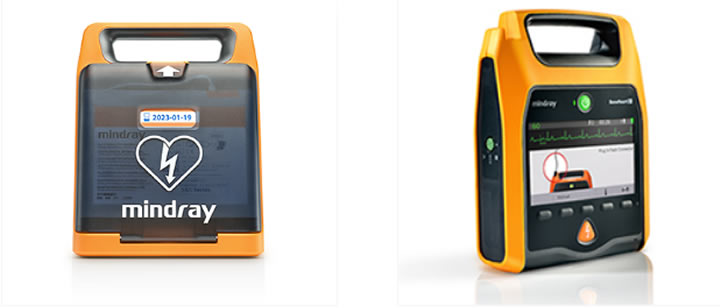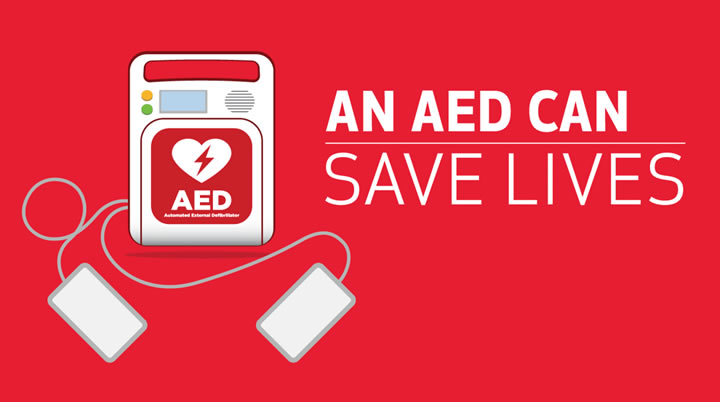An AED can give you another shot at life. Know everything about the emergency, life-saving device.
Medical science is constantly evolving, and thanks to it, we have more life-saving tools than ever. Unfortunately, the grievous news that a lot of people with sudden cardiac arrest left us forever due to untimely rescue happens around us more often. If there is a tool that can give you another chance at life in literal terms, it is the automatic AED. AED is definitely designed to improve the survival rate of SCA (sudden cardiac arrest) for the golden time for rescue as AED is such a device that does not need professional training to use and can be found in a most public place.
Here is everything you need to know about the modern life-saving device.
What is an AED?
AED stands for Automated External Defibrillator – an easy-to-use, life-saving device that can be used by anyone to resuscitate when someone is suffering from SCA (sudden cardiac arrest). Nowadays, there is a wide range of AED devices available, ranging from semi-automatic to fully automatic. What makes them different is that a semi-automatic AED has a button for rescuers to press if a shock is required, while a fully automatic AED does not. An automatic AED will automatically shock the patient if a shockable heart rhythm is detected.
Mindray offers both semi-automatic and fully automatic AEDs. With the new QShook and ResQNavi technology, Mindray AED is able to deliver the first shock in less than 8 seconds and provide animation guidance and voice prompt, helping rescue workers save lives every second.

When do you need to use an AED, and what does an AED do?
An automatic external defibrillator (AED) is used to revive a heart that has gone into a cardiac arrest where the heart stops working as a result of a disruption in the electrical activity of the heart.
Two types of electronic disruption can happen:
- ➢ One in which the heart beats at a dangerously fast pace known as ventricular tachycardia.
- ➢ One in which the heart beats at a fast and irregular pace known as ventricular fibrillation.
In both of the above-mentioned conditions, the heart does not pump enough blood to the body. The situation is very critical as your brain, and all the vital organs stop receiving blood and oxygen all of a sudden. If prolonged, the situation may lead to severe damage and even death of the person within minutes.
Hence, timely resuscitation is required, and an AED would do that for you. An AED offers both defibrillation and CPR guidance. The sooner the normal rhythm of the heart is restored, the smaller chance of permanent damage to the brain and organs will have.
As a fully portable and handy device that gives an electrical shock to regain the average heartbeat, the automatic AED is prevalent in most public places like malls, offices, airports, and even schools.

How does an AED work?
A complete AED system contains an automatic AED device and additional accessories that include a battery, two pads, electrodes, and an adapter (optional). Given that, AED device is critical for our health, it is necessary to figure out how to use an AED.
Here is a step-by-step process on how to use an automatic AED:
- First, you need to turn on the AED and follow the guidance. This modern lifesaver device comes with built-in voice prompts. There are some models that automatically turn on as you open the lid.
- The second step is applying pads by following the prompts. Place an AED pad under the clavicle of the patient’s right upper chest. The other one is near the left armpit of the patient’s lower thoracic cavity.
- Once the pads are well applied. AED will start the heart rhythm analysis automatically by using the built-in algorithm.
- Then AED will decide if a shock is required. For a semi-automatic AED, the device will ask the user to press the shock button to deliver the shock while for a fully automatic AED, the device will deliver the shock automatically.
Training to use AED device
An automatic AED is not challenging to use. In fact, they are totally safe and easy to use by anyone, even laymen too in case of an emergency. In Spite of their simple modus operandi, it is recommended to get the proper training to get the hang of the process without panic in actual practice. Various health organizations are offering training that teaches you how to use AED, perform CPR, when to call emergency services and how to detect the signs of cardiac arrest. Believe me, squeezing out a little time to study the AED program will bring you great wealth and opportunities in the future.
If you are afraid to use an automatic AED, fearing you might cause more damage than benefit, you must know that Federal Cardiac Arrest Survival Act and Good Samaritan laws in various states offer protection to the bystanders.

Summing Up
It is always advised to call the local emergency centre at first in case of an emergency but never hesitate to use an AED as your help can give another chance in life to the person in need. Get appropriate automatic AED training and look up the list of authoritative AEDs. If you are looking to get your hands on a premium AED, try our tried and tested Mindray AED.

